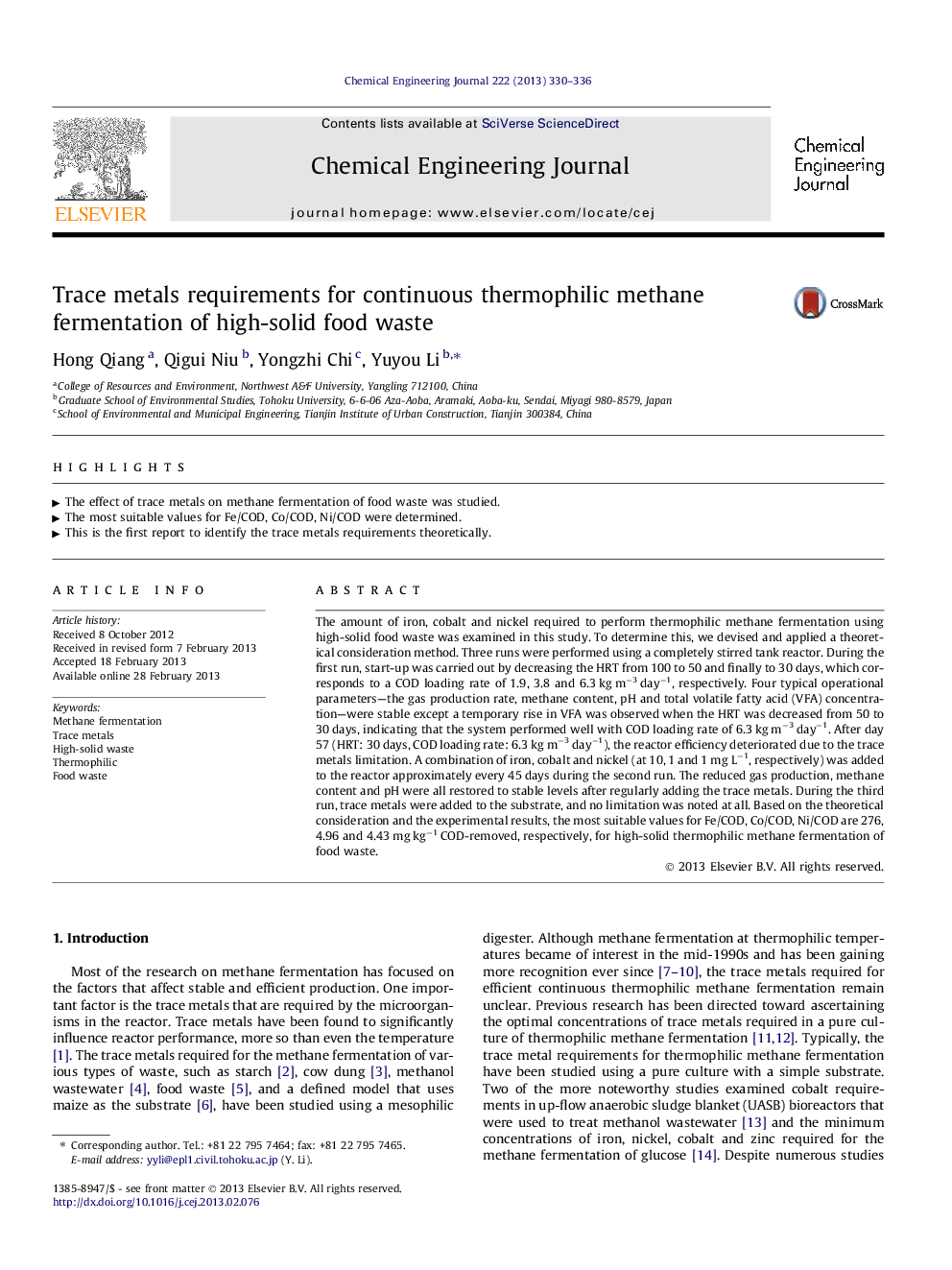| Article ID | Journal | Published Year | Pages | File Type |
|---|---|---|---|---|
| 148565 | Chemical Engineering Journal | 2013 | 7 Pages |
The amount of iron, cobalt and nickel required to perform thermophilic methane fermentation using high-solid food waste was examined in this study. To determine this, we devised and applied a theoretical consideration method. Three runs were performed using a completely stirred tank reactor. During the first run, start-up was carried out by decreasing the HRT from 100 to 50 and finally to 30 days, which corresponds to a COD loading rate of 1.9, 3.8 and 6.3 kg m−3 day−1, respectively. Four typical operational parameters—the gas production rate, methane content, pH and total volatile fatty acid (VFA) concentration—were stable except a temporary rise in VFA was observed when the HRT was decreased from 50 to 30 days, indicating that the system performed well with COD loading rate of 6.3 kg m−3 day−1. After day 57 (HRT: 30 days, COD loading rate: 6.3 kg m−3 day−1), the reactor efficiency deteriorated due to the trace metals limitation. A combination of iron, cobalt and nickel (at 10, 1 and 1 mg L−1, respectively) was added to the reactor approximately every 45 days during the second run. The reduced gas production, methane content and pH were all restored to stable levels after regularly adding the trace metals. During the third run, trace metals were added to the substrate, and no limitation was noted at all. Based on the theoretical consideration and the experimental results, the most suitable values for Fe/COD, Co/COD, Ni/COD are 276, 4.96 and 4.43 mg kg−1 COD-removed, respectively, for high-solid thermophilic methane fermentation of food waste.
► The effect of trace metals on methane fermentation of food waste was studied. ► The most suitable values for Fe/COD, Co/COD, Ni/COD were determined. ► This is the first report to identify the trace metals requirements theoretically.
